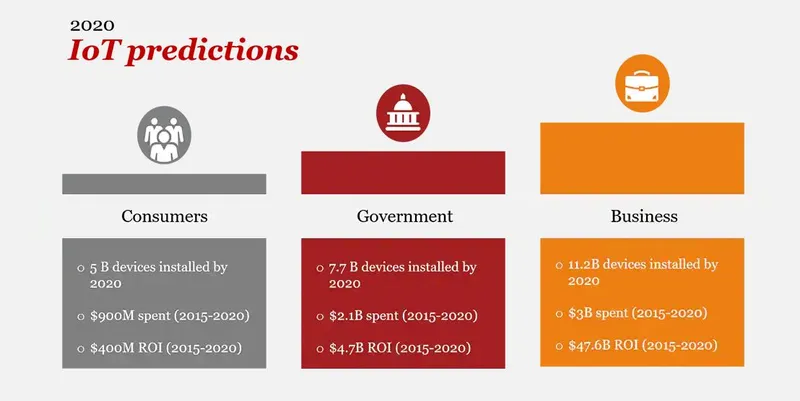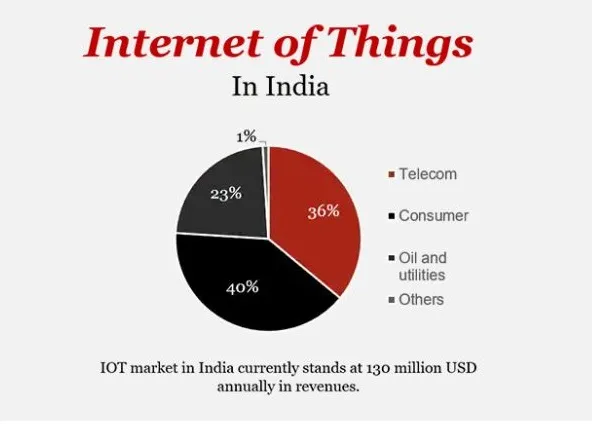IOT handbook: Why entrepreneurs need to consider IoT in improving customer experience
It is the wave of the future, and its dependent on how communication, whether it is people to people, people to things or machine to machine will enhance the overall experience of various services and sectors. Therefore, to be ahead in the game, it’s time to IOT with great thought and vision.
In its truest form, Internet of Things (IoT) is a digital mesh of internet-connected devices. From devices to automobiles, it connects a plethora of physical objects for seamless data exchange.
Garther, the global think tank predicts that by 2021, the world will have 25 Billion connected things. Now that is a huge digital mesh by any scale. One that could connect the entire perimeter of the earth and all the digital things inside it.

Smart houses, wearable devices, smart retail stores, connected cars, are all classic examples of IoT. Since 2014, Internet of Things is gaining momentum as a change factor in customer experience. New-gen entrepreneurs whose businesses are reliant on virtual connections must take IoT seriously to improve customer experience.
From pills to planes: The growth story of Internet of Things
From smart medical pills to sensor-loaded planes, IoT has weaved itself into the fabric of everyday consumer life. It is creating a new wave of man-machine communication that was considered science fiction in past.
How did IoT gain so much traction in recent years? What are the catalyst agents that are weaving the growth story of IoT?
Turns out, there are four main catalysts that are staging the Internet of Things growth story:
- High mobile adoption
- Expanded internet connectivity
- Availability of low-cost sensors
- Keen interest from private and public sectors
Perhaps the biggest attribute to IoT adoption is the availability of low-cost sensors. BLE-powered sensors, which are of the size of a coin impart computing power to everyday devices. From home appliances to jet planes, these BLE-powered sensors can attach themselves to any surface to capture and transmit data. In fact, latest IoT sensors can also become a part of human skin fabric to monitor health stats. This never-before like technological possibility has kicked off a gold rush in Internet of Things investments.

Source: PwC India
PwC estimates that by 2020, 11.2 billion Internet of Things devices would be installed globally. A staggering $3 billion is estimated to be expended for the cause.

Source: PwC India
In India alone, the Internet of Things market size is pegged at $130 million. Telecom, consumer, oil and gas, finance and healthcare are the major stakeholders in the IoT market pie.
Now, why should entrepreneurs take IoT seriously? What value can it deliver to warrant big-ticket investments?
What value can entrepreneurs unearth with IoT?
IoT can help entrepreneurial pursuits reach the market faster and interact with their customers in a whole new way. It also gives entrepreneurs an uncanny ability to remotely manage and monitor Internet-connected things, and the services that they offer to customers.
Here are some value-additions that such portability would result in:
Business process transformation
IoT will enable businesses to plug a critical gap in real-time data collection from remote devices. It will reduce or even totally eliminate the manual error and economic toil required for accurate data collection. As an added bonus, it also helps data to be broken down for meaningful interpretation.
Data-driven revenue models
Analytics has replaced manual logs and spreadsheets. This is the age of business intelligence that depicts live business data in the form of dashboards. Imagine the business efficiency that can be achieved if real-time data from connected devices can be collected and disseminated? IoT analytics can unearth new revenue avenues, better customer service, cost reduction and also improved competitive advantage.
Connected for a reason: Benefits of IoT in driving customer engagement
Now, let’s get a level deeper and see how Internet of Things can help drive better customer engagement. What follows is not a hypothetical possibility, but real-life use cases and applications of IoT in customer engagement.
- IoT gives hyper-connectivity (wearables)
Worldwide wearable device sales revenue leapfrogged from $16 billion in 2016 to $26 billion in 2018, according to Statista. Wearables provide hyper-connectivity that connects anything to anyone, anywhere, anytime and in any context. Fitness trackers and smart watches are just a fragment of what IoT wearables can do.
Honeywell introduced wearable devices that help supply chain workers to perform several processes with a single wearable device. It not only helps workers conduct activities hands-free but also enables ergonomic data-capture.
- IoT enables proactive service (connected cars, predictive maintenance, etc.)
A decade ago, the ideal traits of a passenger car were space, fuel efficiency, engine longevity and maintenance costs. Today, cloud connectivity and dedicated mobile apps have also climbed into that list.
IoT sensors that are stuck to major automotive components help monitor vital stats like engine performance, brake health, driving pattern, tire pressure among many other things. This data can be collected and analysed over the cloud to provide predictive maintenance.
For instance, one can estimate in advance the need for tyre alignment, engine oil change or brake pad replacement well before any incident happens. This proactive service will prevent mishaps and help improve customer perception about a brand or product.
Ericsson’s connected car is a perfect example of IoT-enabled proactive customer.
- IoT delivers new experiences (cashless shopping - Amazon Go)
IoT has the potential to revamp how customers have been shopping and ordering for their wares. The recent launch of Amazon Go cashierless store and Amazon Dash button are all perfect examples of this new IoT-driven customer experience. It brings customers closer to the shopping experience by cutting down processes that slow down order fulfillment.
Similarly, Disney’s Magic Kingdom also leverages IoT to its advantage. Disney’s Magic Kingdom receives millions of visitors all year. Reducing the wait time at each attraction and ensuring smooth flow of visitors from one attraction to another is not any mean task. Disney is perhaps one of the early adopters of IoT to their advantage.
The MagicBand issued to every visitor acts as a beacon that transmits signals to Disney’s “queue management” task force. The band is pre-loaded with the list of attractions that the visitor has paid for. The task force plans for the visitor flow based on signals. To make visitors visit more attractions, Disney also shoots ads relating to visitor enhancement, etc.
IoT as a driver of connected customer experience
IoT is enabling the intelligent enterprise of tomorrow. As IoT devices increase in number and improve in performance, it is time for entrepreneurs to think of novel ways to use them better. Using Internet of Things as a means to collect data is not a viable long-term business proposition. It should be treated as a medium through which intelligent customer experiences can be delivered. Inspiration can be drawn from brands like Amazon, Disney, Honeywell and several others who are making sensors perform magic.
Caution: Internet of Threats ahead
All the benefit that IoT will bring to our lives does not come free of cost. There are perceived threats, which if not handled appropriately could lead to massive security incidents. One of the biggest threats that IoT devices face is that they are susceptible to botnet attacks, data eavesdropping, industrial espionage, or even physical theft. Even the simplest IoT device can be used to execute big ticket security attacks.
Here is an example to demonstrate the point. Two white hat hackers were able to hack a Jeep Cherokee remotely, with a simple internet connection, by harnessing the loophole in its dashboard system called the Uconnect. By hacking into the vehicle’s IoT-connected dashboard they were able to turn ON/OFF ignition, switch on/off a/c, and even steer the vehicle when it was in motion. Now, that points out why it is vital to plan for security measures while taking up IoT development.
(Disclaimer: The views and opinions expressed in this article are those of the author and do not necessarily reflect the views of YourStory.)
(Edited by Suruchi-Kapur Gomes)








